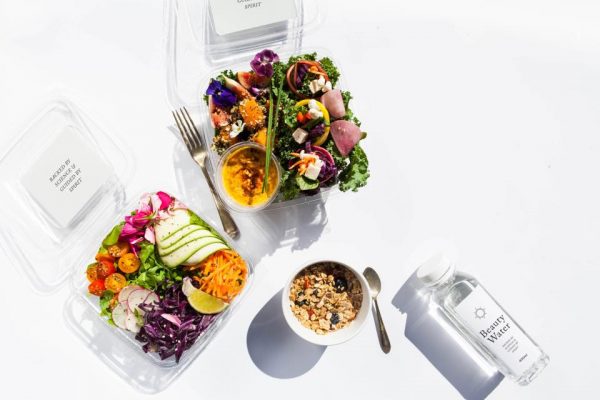My flatmate thinks I’m disgusting.
I have 40 living organisms living in the fridge, and they look like a cross between jellyfish and ham.
These dodgy-looking living organisms are called SCOBY (Symbiotic Culture Of Bacteria and Yeast). I use them to make kombucha, and the reason I have so many is that they multiply every time I brew a kombucha batch. When I don’t have a friend to pass them to, they go into my compost bin.
But at a fashion show in Perth, I realised this by-product of my delicious gut-friendly drink doesn’t have to be wasted.
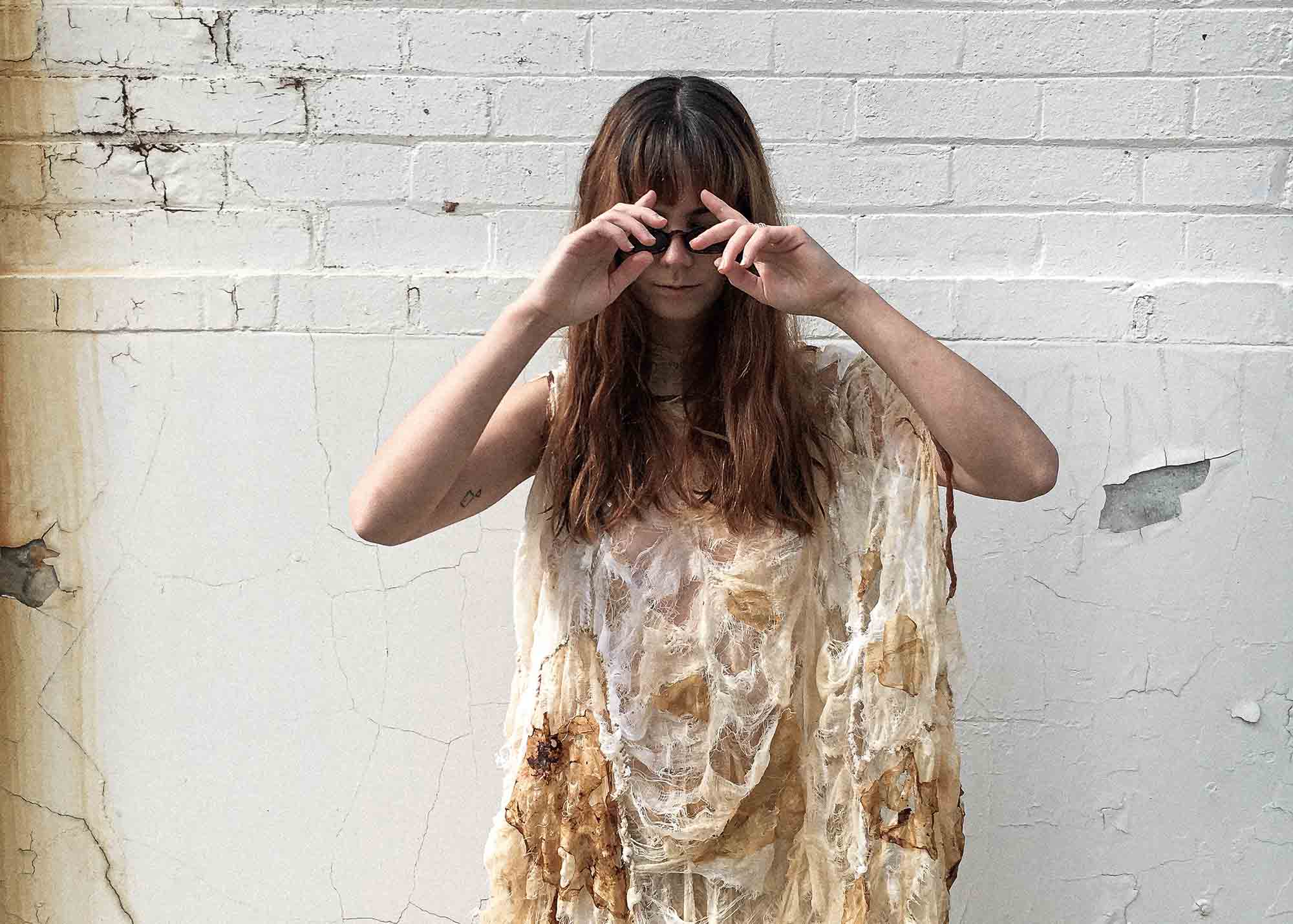
SCOBY leather exists, and I promise it looks way better than jellyfish and ham.
Molly Ryan was the first designer to put SCOBY leather on my radar.
When I saw her SCOBY leather dress walk the runway, I internally complimented the style, the ethereal drape, and how stunning the model looked on the catwalk. It was only later that I discovered the model was in fact wearing an outfit made from the same jellyfish/ham slab that I have fermenting in my pantry.
Circular design
Fashion student, Molly Ryan, has always designed with the planet in mind. During the Curtin University runway in Perth, I wasn’t the only person to do a double-take when it was announced that Molly’s entire collection, Fragments, was completely waste-free.
According to Molly, using SCOBY to achieve this waste-free mission was a no brainer. Though fabricating the material wasn’t as simple as using conventional fabrics. It involved a lot of trial and error.
“This (the lack of widespread SCOBY leather knowledge) lent itself to difficulties, but also successes,” says Molly. “I felt it was a totally organic learning and design process.”
Although the Fragments collection was not dyed, Molly could have added natural dyes to the SCOBY before and during the drying process to change the leather colour. Alternatively, adding a particular type of tea to the brew can also determine the colour.
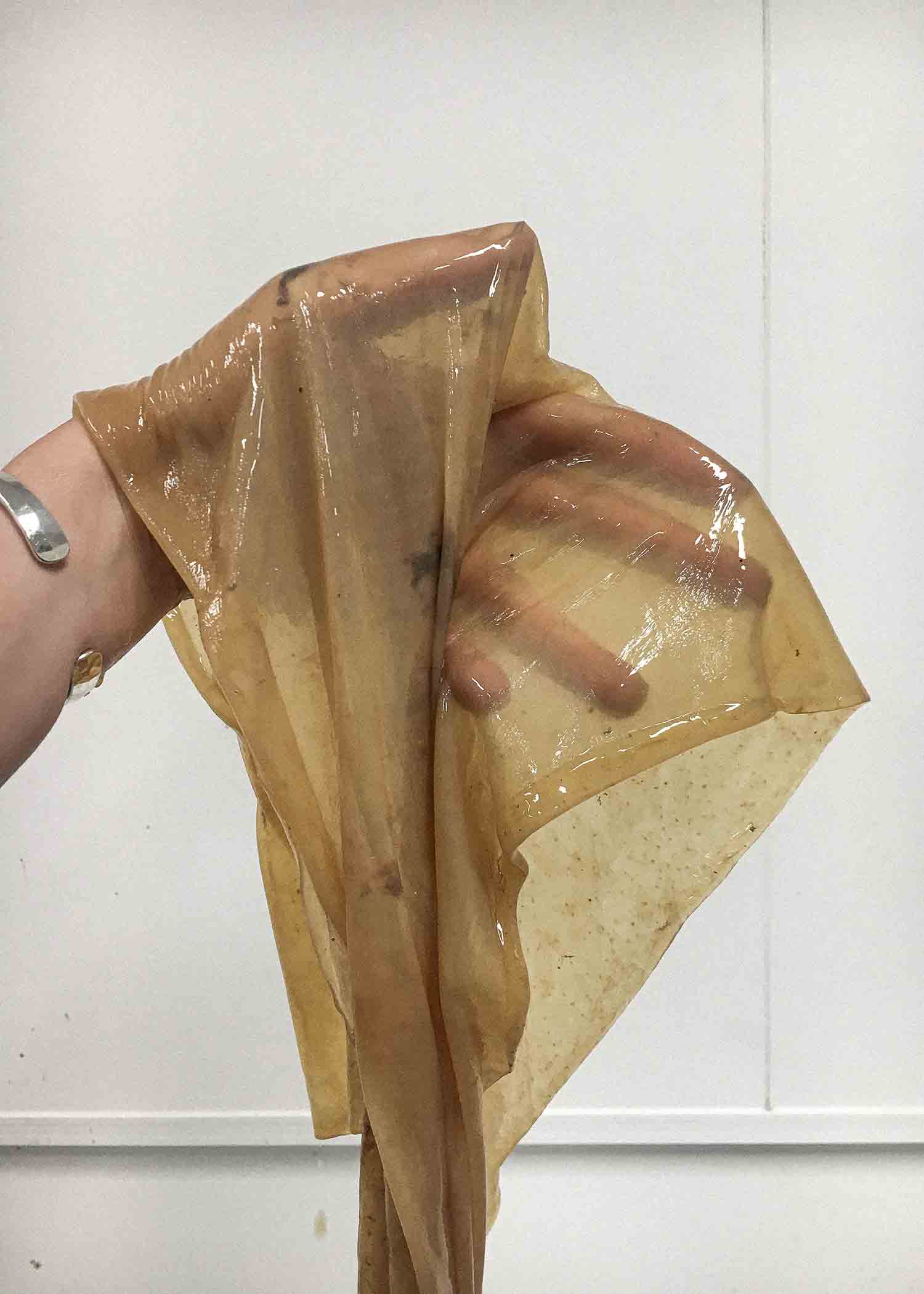
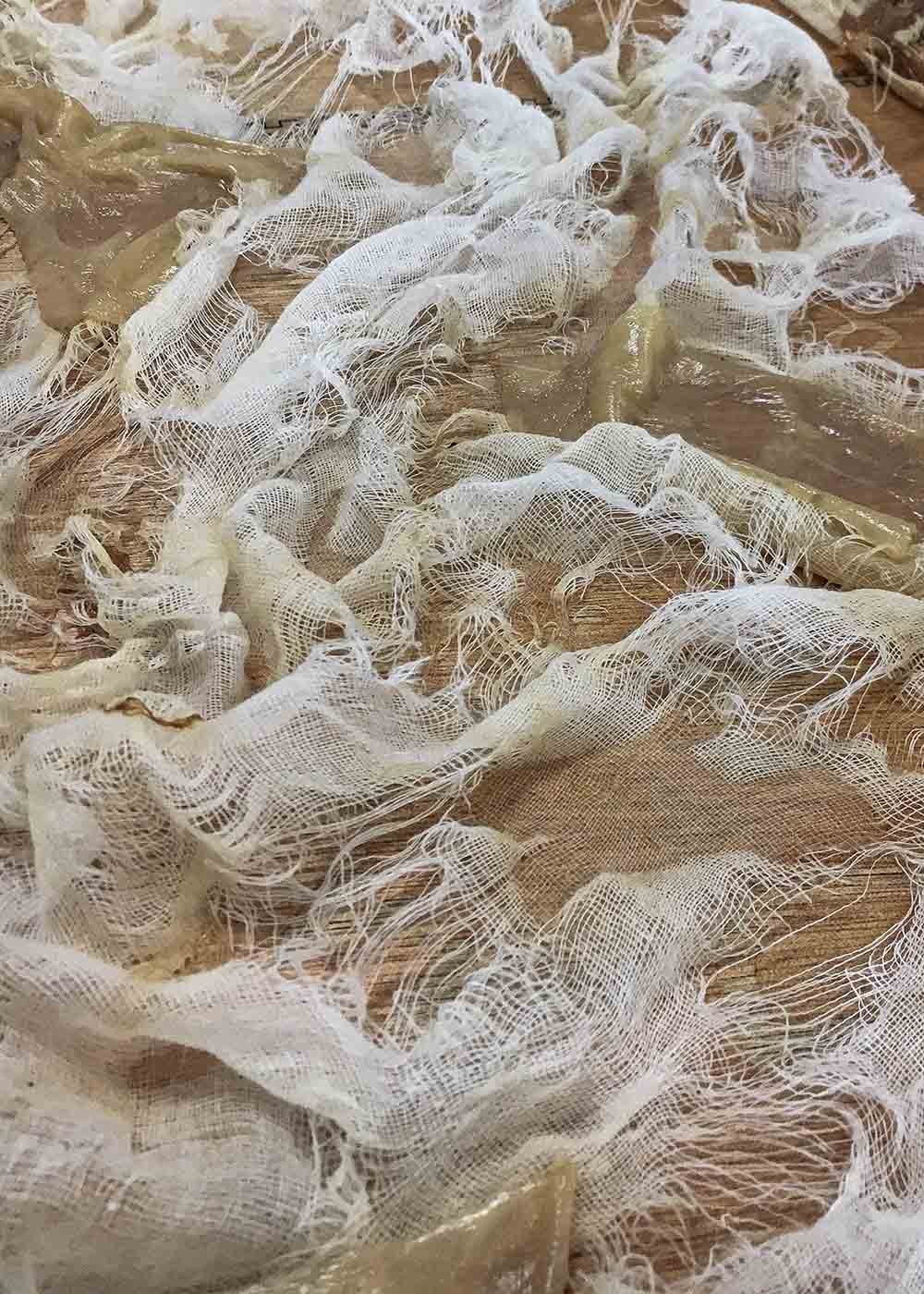
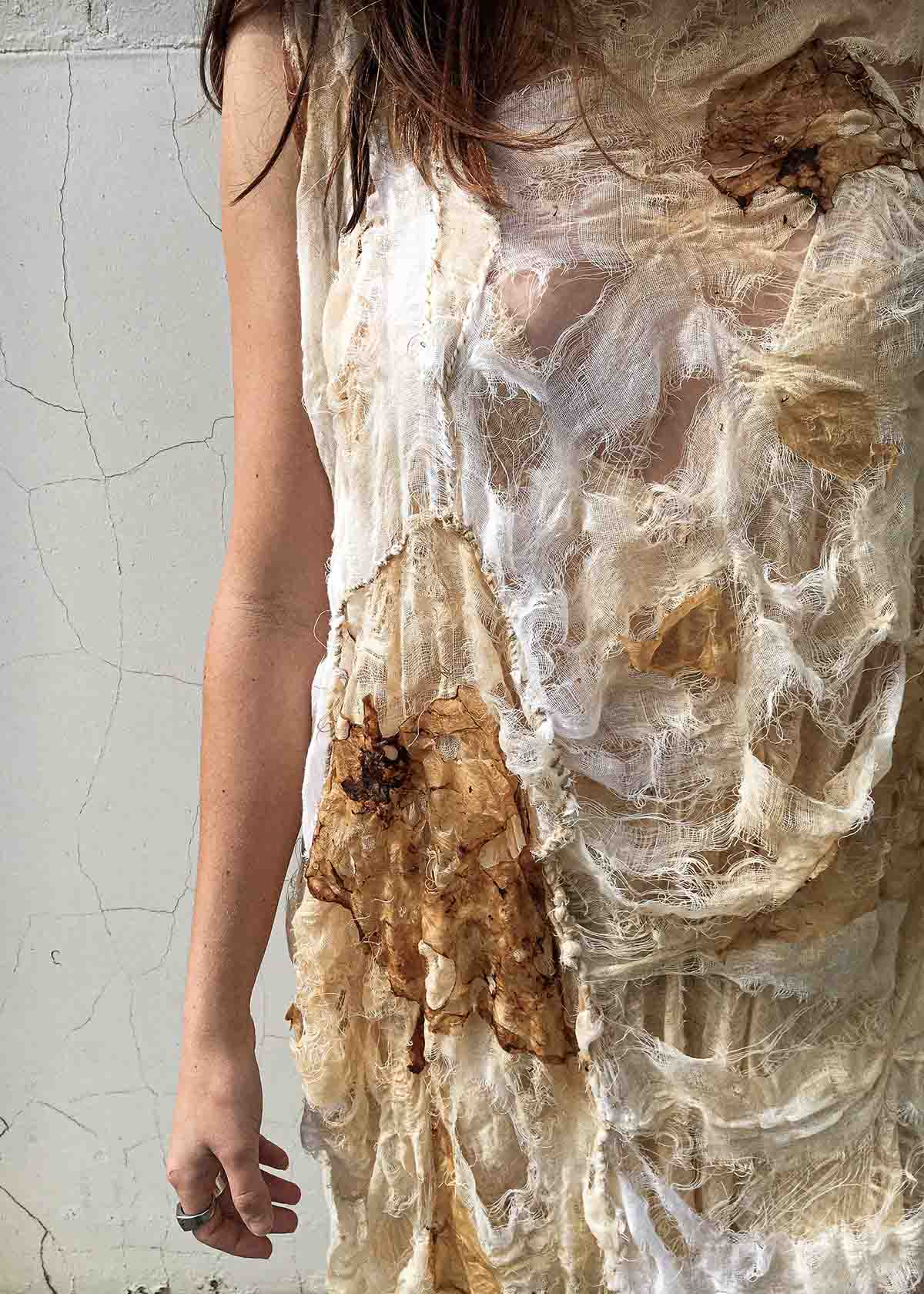
“After becoming inspired by Susan Lee’s (a pioneer in the field of bio cloth for clothing) project, I became fixated on growing the SCOBY ‘into’ fabric, especially damaged fabric, as a means of repair,”
“Which led me to my final concept of Bio Boro; the application of a SCOBY to fabric to mend, build and repair. Drawing inspiration from the traditional Japanese technique, BoroBoro, to be mended or patched together.”
Moving on from creating a virgin fabric, SCOBY can be used to bind together broken textiles too.
The more I think about it, the closer I am to creating my own SCOBY leather capsule wardrobe and donating everything else. SCOBY leather is easy to make, can repair the seemingly un-fixable, is suitable for vegans, and can decompose back into the earth at the end of its life.
So, I’m sold, but do you think we’ll really see SCOBY leather hit the mainstream?
As the world strives to avoid synthetics and reduce the destruction of the fashion industry, we need to reset our ideas around what fabrics are okay and what is not. But right now, I hope you’re inspired to applaud Molly’s ingenuity in utilising a sustainable fabric that I have no doubts we’ll see on the catwalk more often.


